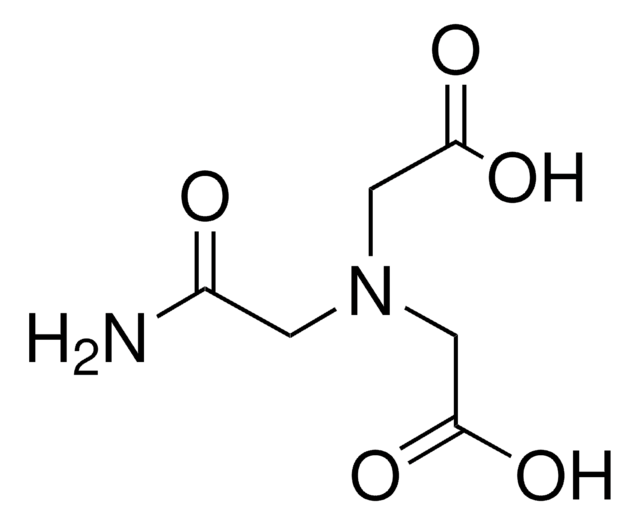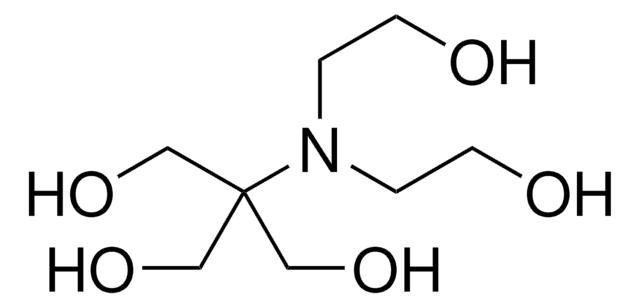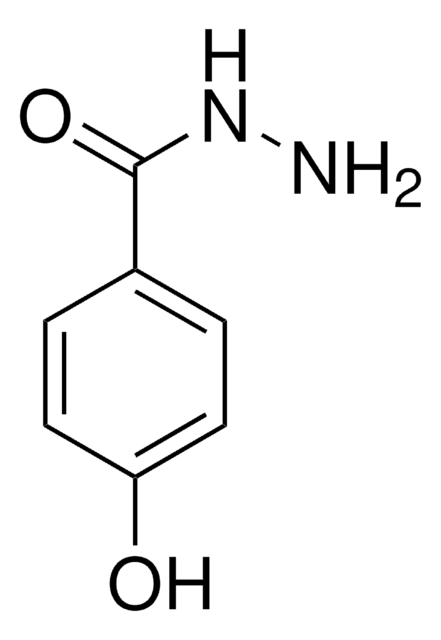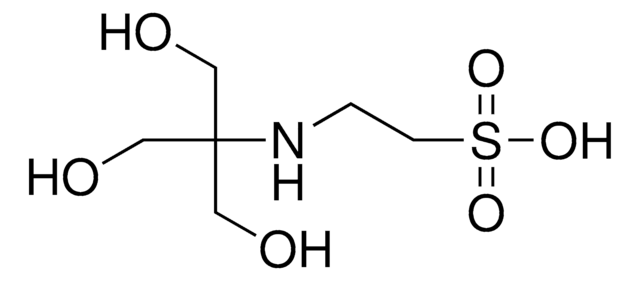Key Documents
A9758
ACES
≥99.0% (titration)
Synonim(y):
2-[(2-Amino-2-oxoethyl)azaniumyl]ethanesulfonate, 2-[(Carbamoylmethyl)amino]ethane-1-sulfonic acid, N-(2-Acetamido)-2-aminoethanesulfonic acid, N-(Carbamoylmethyl)-2-aminoethanesulfonic acid, N-(Carbamoylmethyl)taurine
About This Item
Polecane produkty
Poziom jakości
Próba
≥99.0% (titration)
Postać
crystalline powder
pH
3.0-4.5
przydatny zakres pH
6.1-7.5
pKa (25°C)
6.8
mp
>220 °C (dec.) (lit.)
rozpuszczalność
water: 0.523 g/mL, clear, colorless
Zastosowanie
diagnostic assay manufacturing
temp. przechowywania
room temp
ciąg SMILES
NC(=O)CNCCS(O)(=O)=O
InChI
1S/C4H10N2O4S/c5-4(7)3-6-1-2-11(8,9)10/h6H,1-3H2,(H2,5,7)(H,8,9,10)
Klucz InChI
DBXNUXBLKRLWFA-UHFFFAOYSA-N
Szukasz podobnych produktów? Odwiedź Przewodnik dotyczący porównywania produktów
Opis ogólny
Zastosowanie
- as a component of buffered charcoal yeast extract (BYCE) agar for plating bacteria culture and Buffered Yeast Extract (BYE) liquid medium to culture bacteria
- to study the impact of the pH shift on the thermal inactivation of bacterial (Bacillus subtills) spores
- as a buffer system to study the depolymerization of starch by α-amylase during exposure to hydrostatic pressure.
Inne uwagi
Kod klasy składowania
11 - Combustible Solids
Klasa zagrożenia wodnego (WGK)
WGK 3
Temperatura zapłonu (°F)
Not applicable
Temperatura zapłonu (°C)
Not applicable
Środki ochrony indywidualnej
Eyeshields, Gloves, type N95 (US)
Certyfikaty analizy (CoA)
Poszukaj Certyfikaty analizy (CoA), wpisując numer partii/serii produktów. Numery serii i partii można znaleźć na etykiecie produktu po słowach „seria” lub „partia”.
Masz już ten produkt?
Dokumenty związane z niedawno zakupionymi produktami zostały zamieszczone w Bibliotece dokumentów.
Klienci oglądali również te produkty
Nasz zespół naukowców ma doświadczenie we wszystkich obszarach badań, w tym w naukach przyrodniczych, materiałoznawstwie, syntezie chemicznej, chromatografii, analityce i wielu innych dziedzinach.
Skontaktuj się z zespołem ds. pomocy technicznej









